Graham Reid | | 2 min read
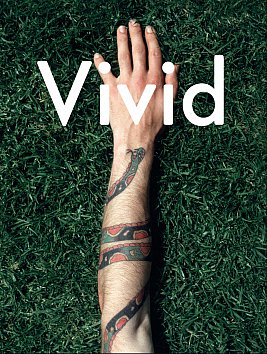
Although Paul Hartigan's art practice has roamed across a number of media and styles — from distinctive representational Pop Art painting through tee-shirt and poster designs to Polaroids and beyond — it is his neon work which is the most familiar to the general public.
At the interface of art and commerce, his signs in Auckland for the Las Vegas strip club, the Powerstation, Real Groovy and the Martial Arts shop on Queen St are all vibrant art in plain sight.
Beyond such commercial work, many of Hartigan's neon installations are akin to calligraphy in light — for example his abstract neon work Colony inside the atrium of the engineering building at the University of Auckland on Symond St – and many have the quicksilver energy of a Paul Klee sketch frozen in bright colours.
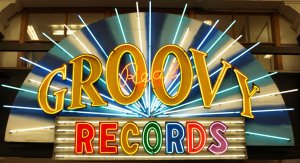 In this handsomely presented overview
of Hartigan's career — less a biography than a chronological,
conducted tour through the artist's working life by Art New
Zealand writer Don Abbott – we are given an insight into the
work of a man who was emblematic of a new generation of artists which
emerged in the Seventies.
In this handsomely presented overview
of Hartigan's career — less a biography than a chronological,
conducted tour through the artist's working life by Art New
Zealand writer Don Abbott – we are given an insight into the
work of a man who was emblematic of a new generation of artists which
emerged in the Seventies.
Hartigan was one of the new internationalists whose work drew from popular culture, American comics (his famous drip-paint portrait of Lee Falk's character for The Phantom in '73), rock music, Warhol and Disney with enjoyable impunity and originality.
Much of his playful, colourful and energetic work seemed heretical in a milieu which favoured grim McCahons and where the New Zealand landscape was to be explored with an almost proselytising fervor. When Hartigan got round to his own landscape series in the mid Seventies they owed more to Disney as re-imagined by the artists of Zap and other underground American comics.
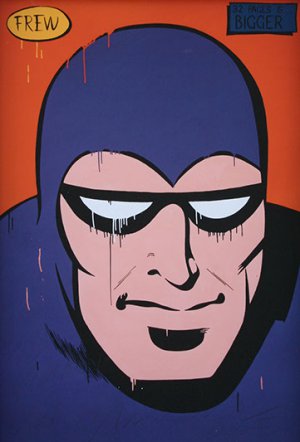 Writer Abbott – with excellent
reference to many specific works through scores of full colour photos
and reproductions — follows the young Hartigan from childhood and
school days where the precocious youngster soaked up influences from
Leon Narbey, Don Driver and his art teacher Tom Kreisler in New
Plymouth, painted the remarkable murals on a wall of the local club
at age 16 (using the idea of thrown shadows of figures against a
post-psychedelic colour) and by the following year had his bold
Lichtenstein-influenced work Spring in a provincial
competition.
Writer Abbott – with excellent
reference to many specific works through scores of full colour photos
and reproductions — follows the young Hartigan from childhood and
school days where the precocious youngster soaked up influences from
Leon Narbey, Don Driver and his art teacher Tom Kreisler in New
Plymouth, painted the remarkable murals on a wall of the local club
at age 16 (using the idea of thrown shadows of figures against a
post-psychedelic colour) and by the following year had his bold
Lichtenstein-influenced work Spring in a provincial
competition.
Remarkable characters walk through these pages: at Elam he sat next to future Split Enz-founder Phill Judd and when — after a year in Melbourne – he returned to Auckland and stated Snake Studios in Darby St in '74, a parade of musicians (Graham Brazier among them), artists (Billy Apple, Pat Hanly, Dick Frizzell), fashionistas and record company people would drop by.
Snake – a crucible of artistic and commercial activity — ventured into posters and tee-shirts for touring international rock acts.
After he left the company and country in '77 for international travel on the back of an art award, he returned again in time for the punk revolution and photographed bands such as the Scavengers, Suburban Reptiles and Th'Dudes.
But it was move into neon art and commercial commissions in the Eighties — at a time when the Claude Neon company had a monopoly — which brought his work, if not the artist himself, into the mainframe of public recognition.
Vivid doesn't explore the man as much as the work, so Paul Hartigan remains an elusive and distant figure, represented by his art in this engaging and frequently insightful overview.

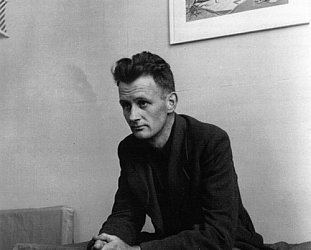
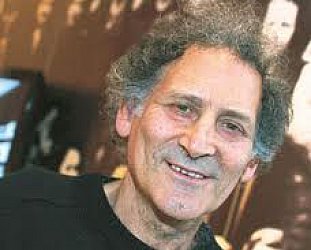

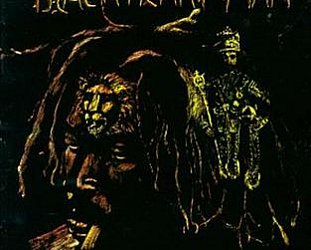
post a comment